Mazanec Czech Easter Bread
As a grade-school child I lived with my family in Prague, the capital city of the Czech Republic. We typically had drizzly, cold winters – and as spring approached, we all anticipated the blossoms, markets and traditions that springtime ushered in. One favorite food during Easter season in the Czech Republic is Mazanec Czech Easter bread, a special bread made during the Easter season. In Prague, Easter is celebrated with beautiful Easter markets that dot the main squares. Booths are filled with hand painted eggs, little trinkets for sale, blacksmiths working over hot fires and sweet treats to eat. I loved smelling the hot food, listening to horse drawn carriages and maneuvering through the old cobblestone streets.

Looking for More Easter Recipes?
One of the more interesting items for sale at the markets are the Easter “pomlazka.” This is a traditional, handmade, Easter whip made out of twigs with colorful ribbons attached to the end. Tradition has it that women should be spanked on Easter Monday (the day after Easter Sunday) in order to keep their beauty, health and fertility for the next year. Women would give men Easter eggs in return. While I’m not particularly a fan of being whipped, especially by my little brother who quite enjoyed this tradition, I did enjoy the bright colors and learning about the Czech culture.



Along with pomlazka and decorating traditional Easter eggs, many Czech families eat a sweet Easter bread called mazanec that you can buy at local stores or make at home yourself. Mazanec comes from the word “mazat” which means to anoint, and is often decorated with a cross in the middle made out of almonds. The tradition of mazanec dates back to the 15th century, when wealthier families would often bake a small loaf for each family member. A similar bread is also made at Christmas time, but it is braided as opposed to the circular loaf eaten at Easter.

My take on mazanec varies a little from the traditional. Instead of soaking the raisins in rum, I left them plain and actually substituted currants, which are a little bit smaller than raisins, and which my family prefers to raisins. I also added some lemon zest for flavor which we all enjoyed. This would be a perfect recipe to make with your family for Easter time if you are looking for a slightly sweet but substantial bread. It would pair perfectly with some jam or butter. Vesele Velikonoce!

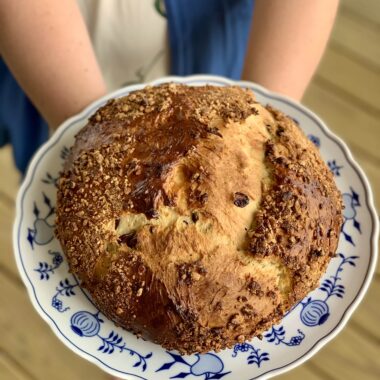
Mazanec Czech Easter Bread
Ingredients
- 1 cup milk
- ¼ cup heavy cream
- 1 Tablespoon instant yeast
- ½ cup granulated sugar
- 2 large eggs lightly beaten
- 3 Tablespoons unsalted butter melted
- 1 teaspoon vanilla extract
- zest from 1 lemon
- 1 teaspoon salt
- 3 1/2-4 cups all purpose flour
- 1 cup raisins, currants, craisins or other dried fruit
- 1 large egg
- slivered almonds or nuts for decoration
Instructions
- Heat the milk and cream together in a small bowl until warm (not hot) to the touch. If you use the microwave for this step, mix it before testing the temperature as it can heat unevenly.
- Add the yeast, sugar, eggs, melted butter and vanilla extract together and stir to combine.
- In a mixer or other bowl, add the flour, salt, lemon zest and dried fruit. Slowly add in the liquid mixture and mix until a ball of dough begins to form. Knead the dough for about 5 minutes in a mixer, or about 10 minutes by hand. Add flour a little at a time until the dough clears the side of the bowl and isn’t overly sticky. However it should still be a little bit sticky.
- Oil a bowl and put the kneaded dough in the bowl. Let the dough rise for about 2 hours until it has just about doubled in size (depending on the temperature of your kitchen this may take a little less or more time).
- Punch the dough down and knead it a few times. Shape it into a round loaf. Place the loaf on a parchment-lined baking sheet. Make an egg wash by whisking the egg and 1 tsp of water together in a small bowl. Lightly brush the egg wash over the top of the dough. Add slivered almonds (or any other nut you may like) in the shape of a cross, pressing lightly for the almonds to stick. Cover the dough with a kitchen towel and allow to rise for another hour until puffed up again.
- Preheat oven to 350 degrees and bake for about 50 minutes. Around the 20 minute mark, check your mazanec. If the top is browning too much, cover it with a piece of aluminum foil to stop the browning.
- Allow it to cool before slicing. Enjoy with a smidge of butter, a drizzle of honey or a dab of jam on top. Yum!
Notes
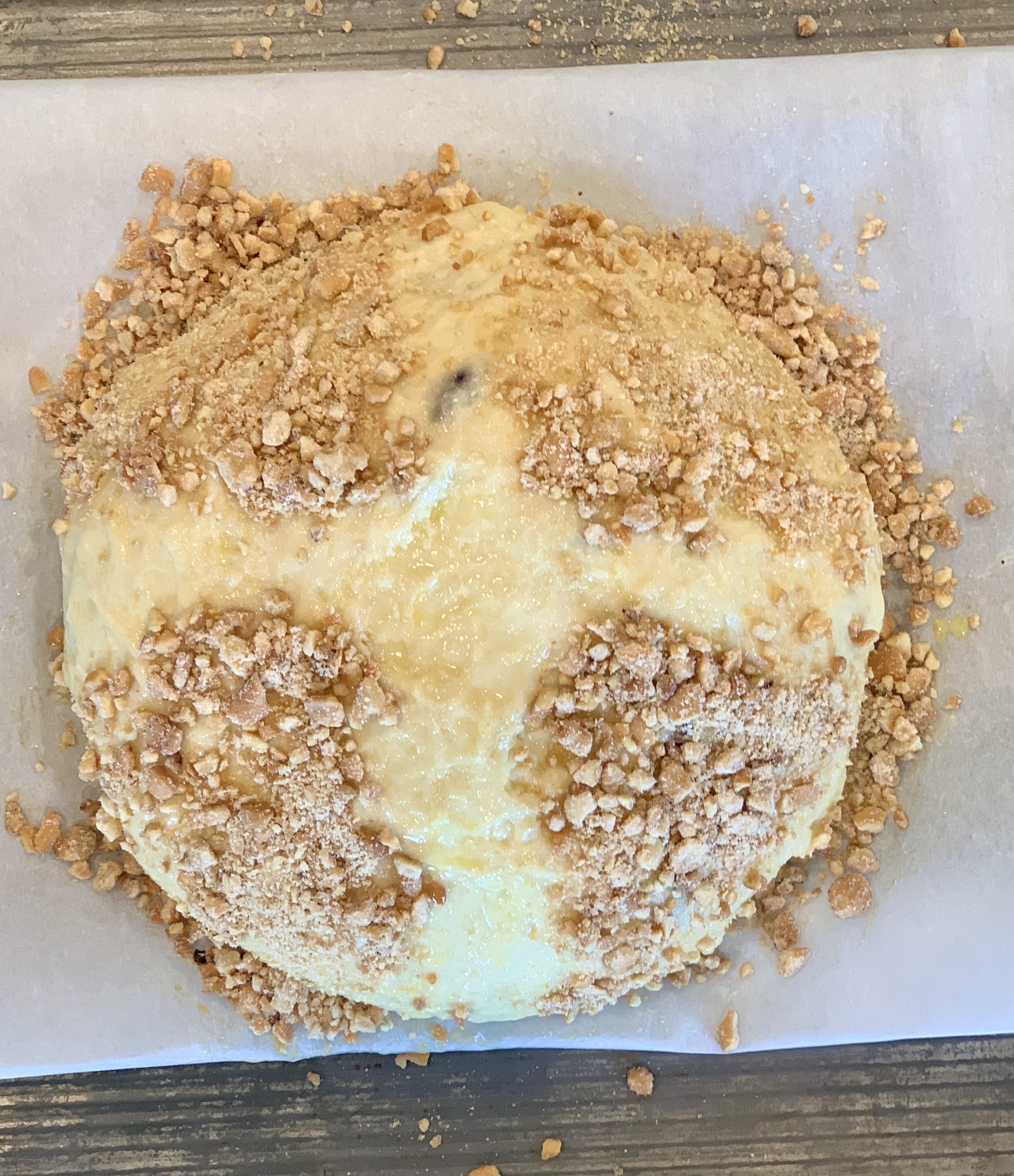
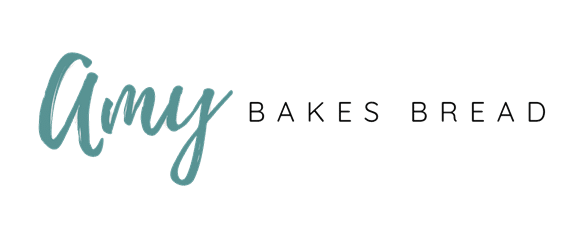
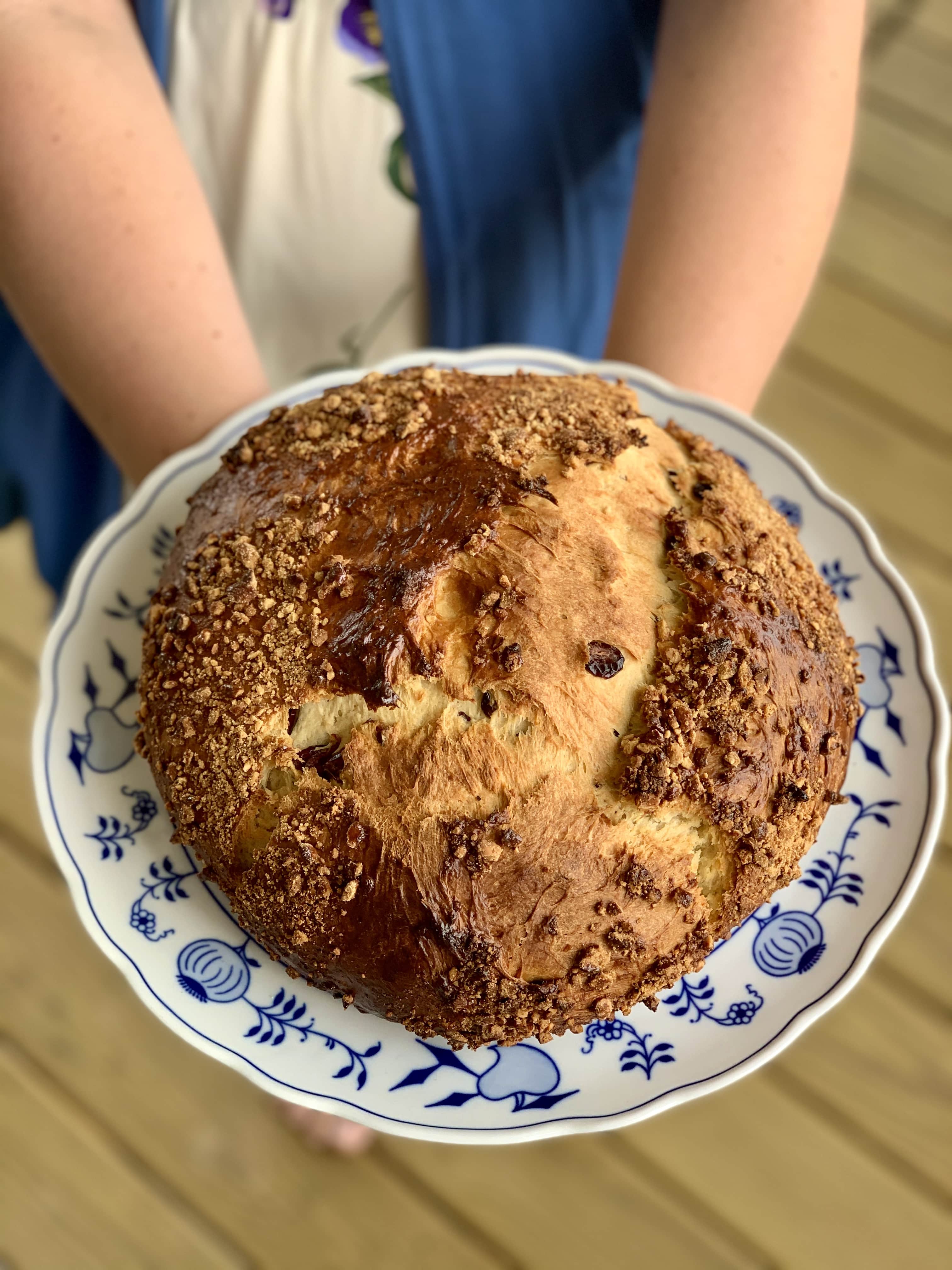


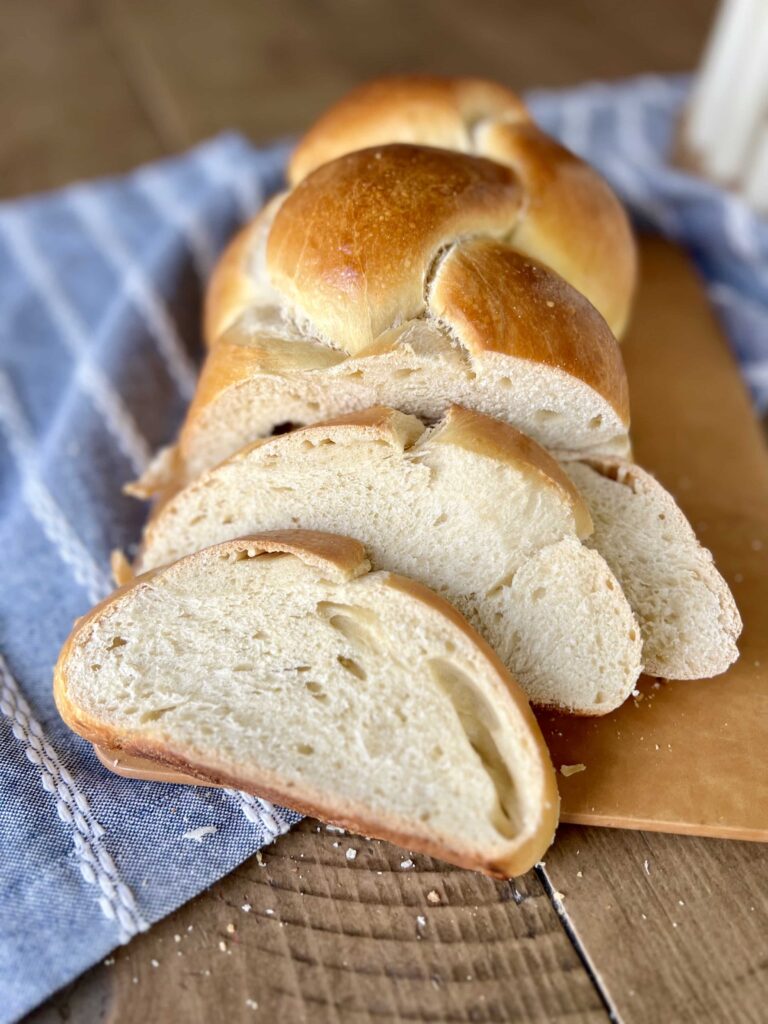
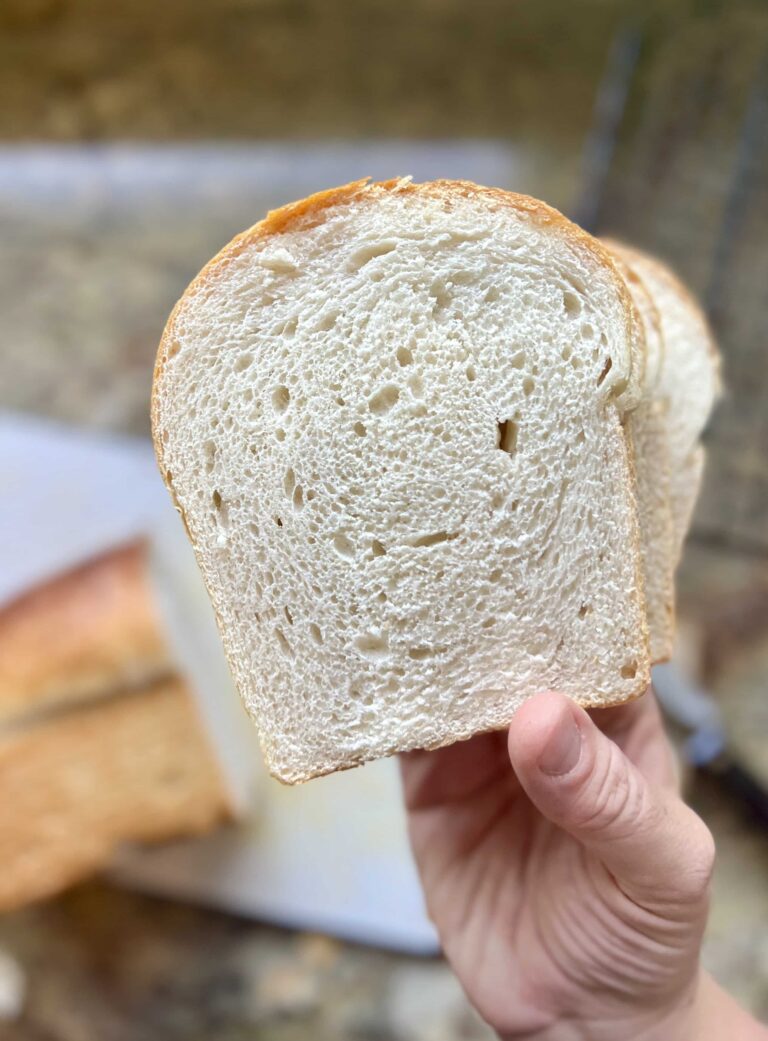
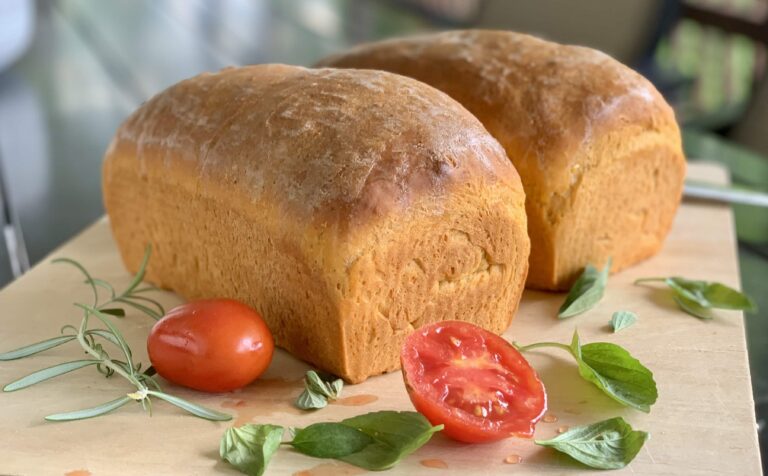
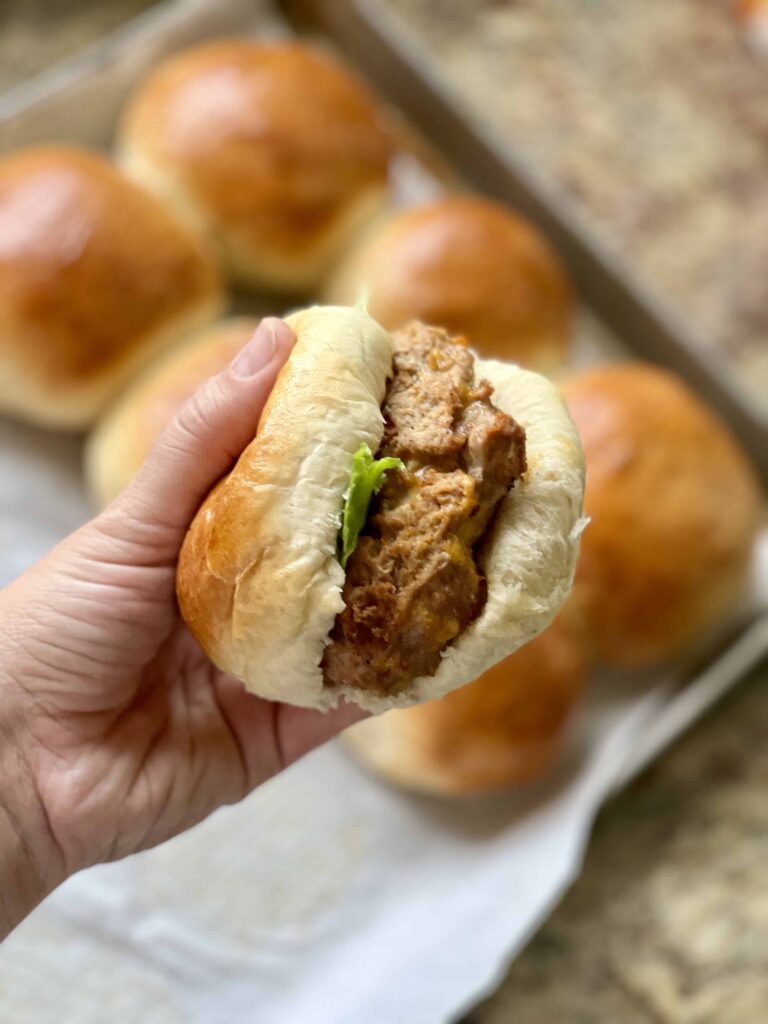
Vesele Velikonoce!! Happy happy EASTER, indeed! I love all of the memories from our years in Prague, and EASTER was definitely a highlight. It’s fun to refresh my memory of the delicious EASTER bread. Thanks for sharing, and for all of the cultural photos and descriptions! Love this post!! 🇨🇿 🍞🙏🏻🐣💐🌷🐰
Thank you 🙂
This is so fun, and I love the pictures from your time in Prague. Do you remember only using the internet once a day, and only to send and receive emails … times have changed so much 🙃
Looks a lovely recipe and a delightful informative post.
Thank you!